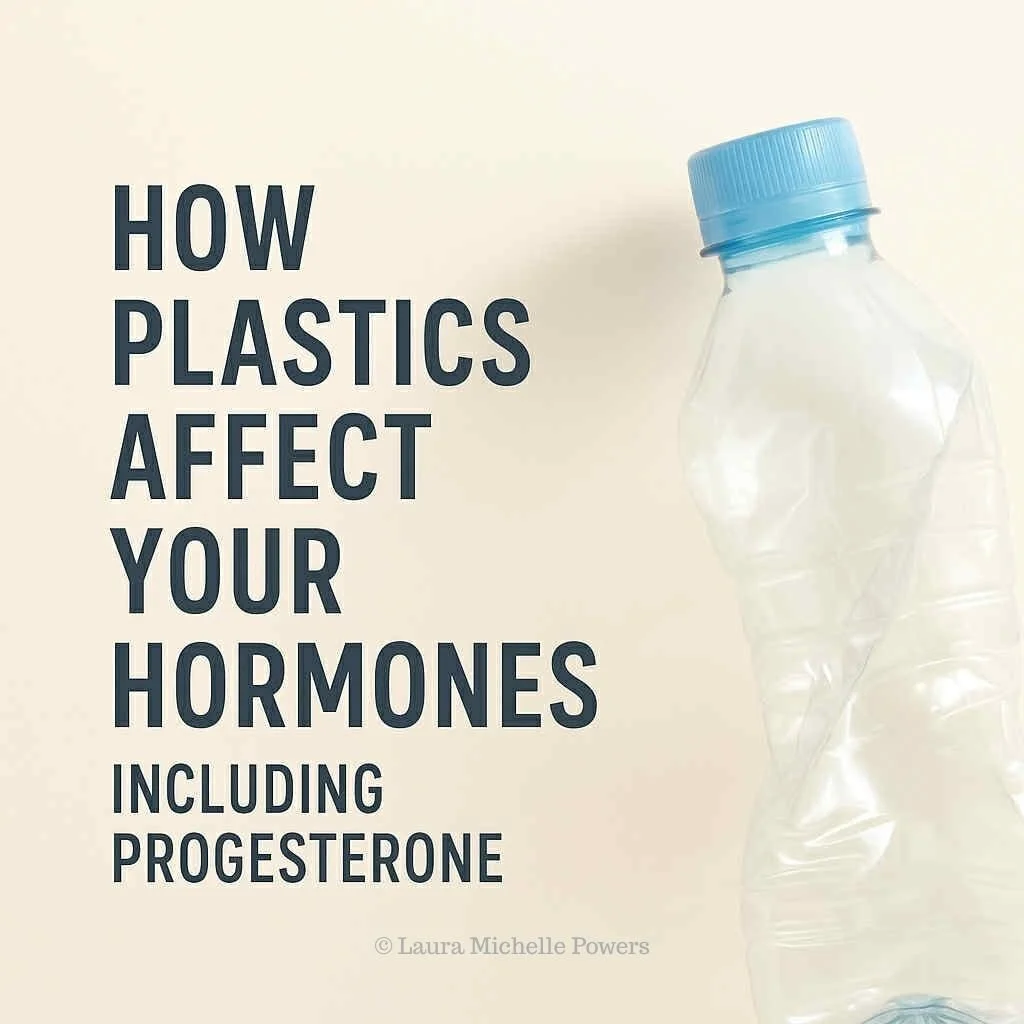Plastic, Microplastics, and Women’s Hormones: What You Need to Know
/By Laura Michelle Powers: Celebrity Psychic, Author, and host of Healing Powers Podcast
In our modern world, plastic is everywhere – in our homes, in our food packaging, even in the clothes we wear. But recent research suggests that this convenience comes at a cost, especially for women’s hormonal health. Plastics and microplastics have been found to contain chemicals that can interfere with the body’s natural hormone balance, affecting everything from menstrual cycles to fertility.
How Plastics Affect Hormones
Many plastics contain endocrine-disrupting chemicals (EDCs) such as bisphenol A (BPA) and phthalates. These compounds can mimic or block hormones in the body, disrupting the delicate hormonal balance we rely on for reproductive health, energy levels, mood, and overall well-being.
The Specific Impact on Progesterone
Progesterone is a key female hormone, essential for regulating menstrual cycles, supporting early pregnancy, and maintaining mood stability. Some EDCs found in plastics can bind to progesterone receptors or interfere with the enzymes responsible for progesterone production. This can:
Lower overall progesterone levels in the body
Disrupt ovulation and menstrual cycle regularity
Contribute to estrogen dominance (too much estrogen relative to progesterone)
Increase risk of PMS, fertility struggles, and hormone-related mood swings
One startling experiment showed that when female dogs were placed in synthetic or plastic-based leggings, their fertility dropped significantly – underscoring the potential impact of plastic exposure even through skin contact.
What the Studies Show
Study 1: BPA and Hormonal Disruption (PubMed ID: 18393023) – Found that BPA can act as a xenoestrogen, binding to estrogen receptors and interfering with hormone signaling. This can indirectly impact progesterone by shifting hormonal feedback loops.
Study 2: Phthalates and Reproductive Hormones (PubMed ID: 8279095) – Identified a link between phthalate exposure and reduced fertility, including effects on progesterone levels and ovulatory function.
Where We Encounter Plastics and Microplastics
Food packaging – especially when heated (microwave trays, takeout containers)
Synthetic fabrics – like polyester, nylon, and spandex in clothing
Cosmetics and personal care products – containing microbeads or packaged in soft plastics
Bottled water and drinks – microplastics have been detected in nearly all bottled beverages tested
Household dust – from degrading synthetic textiles and plastics
How to Limit Your Exposure and Protect Your Hormones
Switch to glass, stainless steel, or ceramic for food and drink storage.
Avoid heating food in plastic containers – use glass in the microwave or oven.
Choose natural fabrics like cotton, linen, hemp, and wool.
Filter your water with a system that reduces microplastics.
Reduce packaged and processed foods, which often come in plastic.
Be mindful of personal care products – opt for those in glass or biodegradable packaging.
Ventilate your home and vacuum with a HEPA filter to reduce inhaled microplastics.
The Spiritual Perspective
From an energetic point of view, our bodies are designed to be in harmony with the natural world. Plastics – synthetic and non-biodegradable – can disrupt not only our physical health but also our energetic flow. By minimizing plastic exposure, we align more closely with nature’s rhythms, creating a clearer channel for vitality, fertility, and intuitive guidance.
References:
Krishnan AV, et al. Bisphenol-A: An estrogenic substance is released from polycarbonate flasks during autoclaving. Endocrinology. 1993;132(6):2279-2286. PubMed ID: 18393023
Jobling S, et al. A variety of environmentally persistent chemicals, including some phthalate plasticizers, are weakly estrogenic. Environmental Health Perspectives. 1995;103(6):582–587. PubMed ID: 8279095

